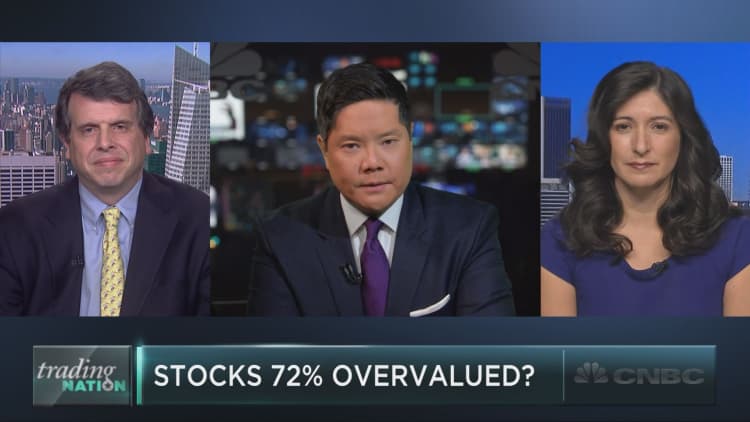


Are stocks, on the whole, too expensive or too cheap?
There are about as many ways to answer that question as there are investors in the market. But based on one particular measure of market valuation, the is overvalued by 72 percent.
That measure would be the comparison between the S&P's total market capitalization (that is, the value of all the shares of the companies in the S&P) and the U.S. gross domestic product (which measures the value of the economic activity that has occurred within America's borders within a certain time period).
Going back to 1964, the S&P 500's market cap has been 57 percent of annual US GDP on average. If one excludes the tech bubble, that number falls to 53 percent. As of the end of March, however, the stocks contained within the S&P are collectively worth 99 percent of GDP, more than 70 percent above the average level.
Bank of America Merrill Lynch's equity and quant strategy team, which presented the above numbers in a report Thursday, noted that the S&P/GDP is just one of a bevy of metrics suggesting that "the market is expensive vs. history." They show that other, better-known indicators such as the S&P's forward price-to-earnings ratio also suggest overvaluation, albeit to a lesser extent.
On the other hand, a much smaller number of measures, such as price-to-book-value and price-to-free-cash-flow, suggest that stocks are appropriately valued or undervalued.
For Gina Sanchez, who runs asset allocation firm Chantico Global, the S&P/GDP metric is particularly troubling.
"The reality is, there should be a relationship between GDP growth and profit growth, and that has largely been absent," Sanchez said Friday on CNBC's "Trading Nation."
"We've been supporting profits growth with things like share buybacks and other unsustainable factors, and fooling ourselves into thinking that that's actually sustainable profits. What this is pointing out is that… we are paying too much for the growth that we can expect to get out of the S&P 500," she said.
However, Convergex chief market strategist Nicholas Colas points to two factors that may explain why the number is so out of whack.
First of all, U.S. companies have become more global. That is to say, several of the names within the S&P 500 are global market leaders, such as Apple and Facebook, and can generate large profits from a bevy of global activities that are not captured by U.S. GDP.
On top of that, low interest rates properly allow market valuations to rise, since they alleviate the pain caused by waiting for future profits to be generated.
However, Colas granted that "it is definitely a worrisome number" – particularly because it is just one among many that suggest moderate, if not severe, overvaluation in American large-cap stocks.









